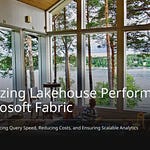Digital twin technology is changing industries quickly. In 2023, 29% of manufacturing companies are using this new method. This number went up from 20% in 2020. The trend is still growing. By 2024, more than 75% of businesses are expected to use digital twins. The global digital twin market will grow a lot. It is expected to reach USD 155.84 billion by 2030. This shows a strong growth rate of 34.2% each year. This growth highlights how important platforms like Microsoft Fabric are for using this technology well.
Key Takeaways
Digital twin technology is growing fast. By 2024, 75% of businesses will use it. Join this trend to stay competitive.
Microsoft Fabric makes data modeling easier. It helps create digital twins. This ensures teams work together well.
Microsoft Fabric gives real-time intelligence. This means quick insights and fast decisions. It helps improve how businesses operate.
Digital twins help many industries. They include manufacturing and healthcare. They make processes better and improve patient care.
Use Microsoft Fabric to solve problems like data fragmentation. It helps manage schemas. This creates high-quality digital twins for better decisions.
Microsoft Fabric Capabilities
Microsoft Fabric has strong features that improve digital twin development. Two main features are unified data modeling and real-time intelligence. These features help you make accurate digital copies of physical things and processes. This leads to better choices and smoother operations.
Unified Data Modeling
Unified data modeling is very important for making good digital twins. Microsoft Fabric makes this easier with a clear method. You can create a common language and structure that shows your real world. This process has several steps:
By following these steps, you can make sure your digital twin models are steady and trustworthy. This unified platform helps you avoid data silos and encourages teamwork. As a result, you get one source of truth that improves your operational understanding.
Real-Time Intelligence
Real-time intelligence is another key feature of Microsoft Fabric. It lets you use live data for quick insights and flexible responses. With real-time data solutions, you can watch your operations all the time and make smart choices right away.
Here are some examples of how companies have gained from real-time intelligence:
Alltech: Used Microsoft Fabric to build a central, AI-powered platform for travel spending analysis. This led to smart decisions that improved efficiency and sustainability.
One NZ: Upgraded to Microsoft Fabric Real-Time Analytics, giving almost 1,000 users real-time customer data insights. This change greatly improved customer service response times, allowing for quick data-driven actions and better service efficiency.
The use of AI and ML tools in Microsoft Fabric also boosts your ability to find problems and improve performance. This built-in AI feature helps you see possible issues before they get worse, ensuring smoother operations.
Digital Twin Applications
Digital twins have changed many industries by offering new solutions for different needs. Let’s look at how various sectors use digital twins to improve their work and increase efficiency.
Manufacturing Insights
In manufacturing, digital twins are very important for making processes better and boosting productivity. They let you create virtual copies of production lines. This helps with real-time watching and analysis. Here are some common ways digital twins are used in manufacturing:
By using these features, you can enable real-time data analysis, support predictive maintenance, and connect easily with IoT sensors. This leads to better operational efficiency and less downtime.
Healthcare Innovations
Digital twins are changing healthcare by using real-time data and advanced analysis. They improve patient care by allowing personalized treatment plans and proactive monitoring. Here are some key benefits of digital twins in healthcare:
They help with surgical planning by letting surgeons practice procedures in a virtual setting before real operations.
Digital twins help predict long-term outcomes, allowing doctors to see how diseases might progress and improve treatments.
They encourage teamwork among healthcare workers, which improves patient care.
Real-world examples show how digital twins make a difference. For example, OSF HealthCare used an AI-powered virtual assistant, saving $1.2 million in contact center costs and improving patient satisfaction by 22%. Similarly, Valley Medical Center saw a 25% drop in sepsis deaths through real-time risk detection.
Smart City Solutions
Smart cities use digital twins to improve city planning and manage infrastructure. By creating virtual models of city areas, you can analyze data to enhance services and use resources better. Here are some top examples of smart city projects using digital twin technology:
Digital twins give a complete view of assets and operations, improving monitoring and control. They combine facility telemetry data into a 3D Digital Twin, helping with better decisions in city planning. With over 500 connections to different systems, including old devices and new IoT sensors, digital twins help cities run more efficiently and sustainably.
Real-Time Insights and Predictive Operations
Real-time insights are very important for making better decisions in digital twin settings. When you use real-time intelligence, you get quick access to data that shows what is happening now. This helps you make smart choices fast, which is key for keeping things running smoothly.
Anomaly Detection
Anomaly detection is a key part of controlling operations in real-time. Microsoft Fabric uses different ways to find unusual patterns in data. Here are some important features:
Starts actions in business apps
Works with Microsoft Teams and Power Automate
These features help you act quickly when issues arise. For example, automated anomaly detection always checks for unusual patterns. It alerts your team before problems get worse. This proactive method can greatly lower downtime and failures. Companies like IWG have moved from reacting to problems to preventing them, boosting their success rates with real-time intelligence.
Performance Optimization
Performance optimization is another major advantage of using digital twins. Microsoft Fabric helps you create and manage digital copies of assets and processes. This lets you keep an eye on things and analyze them, which is important for improving operations. Here are some ways Microsoft Fabric helps with performance optimization:
Gathers both batch and real-time data for full insights
Helps organizations spot trends right away
Automates complex tasks to improve efficiency
By using real-time analytics, you can see and fix problems before they happen. This proactive approach not only boosts your efficiency but also saves you time and money.
Challenges in Digital Twin Development
Building digital twins comes with many challenges. Knowing these problems can help you handle the difficulties of using digital twins well.
Data Fragmentation
Data fragmentation is a big problem in digital twin projects. Many companies have trouble bringing together different data sources. In fact, 78% of companies say data integration issues are a major barrier to reaching their digital transformation goals. Here are some common problems related to data fragmentation:
Integration with Legacy Systems: Many companies struggle to connect digital twins with older systems that have been around for years. These systems often have unstructured data, making it hard to integrate.
High Upfront Costs: The initial costs can be between $500,000 and $2 million, which can be too much for small to medium-sized businesses.
Cybersecurity Concerns: Since digital twins are centralized, they can be easy targets for cyberattacks, which raises serious security risks.
Microsoft Fabric helps solve these problems by combining different data sources without complicated ETL processes. This feature cuts down on data fragmentation and lets you organize data from many formats and sources. You can keep data in its original format, allowing queries across a data lake. This simplification is key for making complete digital twins.
Schema Management
Schema management is another important challenge in digital twin development. Companies often have trouble keeping data structures consistent across different systems. This inconsistency can cause confusion and mistakes in understanding data.
To fix schema management problems, Microsoft Fabric offers a unified platform that enforces ontologies. These shared vocabularies make sure there is consistency across teams and dashboards. By using Microsoft Fabric, you can avoid creating “zoo-like” data silos and create a single source of truth. This method improves teamwork and raises the quality of data used in your digital twin models.
By tackling data fragmentation and schema management, Microsoft Fabric helps you create high-quality digital twins that lead to better decision-making and operational efficiency.
In conclusion, Microsoft Fabric helps you use digital twin technology fully. You can build unified models that improve how you work and make decisions.
Combining Microsoft Fabric with digital twin technology will probably result in:
Better real-time insights through partnerships with companies like NVIDIA.
To get the most out of Microsoft Fabric in your digital twin projects, think about these main features:
Use these improvements to stay ahead in your field and encourage innovation.
FAQ
What is a digital twin?
A digital twin is a virtual copy of a real asset, process, or system. It helps you watch, study, and improve performance right away.
How does Microsoft Fabric support digital twins?
Microsoft Fabric offers unified data modeling and real-time intelligence. These features help you make accurate digital twins and quick decisions.
What industries benefit from digital twins?
Industries like manufacturing, healthcare, and smart cities gain a lot. They use digital twins to boost efficiency, improve patient care, and plan cities better.
How can I start using Microsoft Fabric for digital twins?
Start by picking a specific use case. Then, use Microsoft Fabric’s tools for data integration, modeling, and real-time analytics to create your digital twin.
What are the main challenges in digital twin development?
Common challenges are data fragmentation and schema management. Microsoft Fabric helps solve these problems by giving a unified platform for data integration and consistency.













